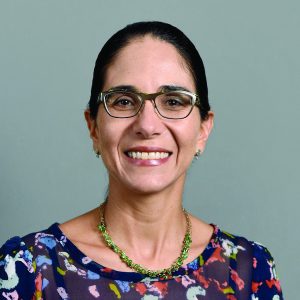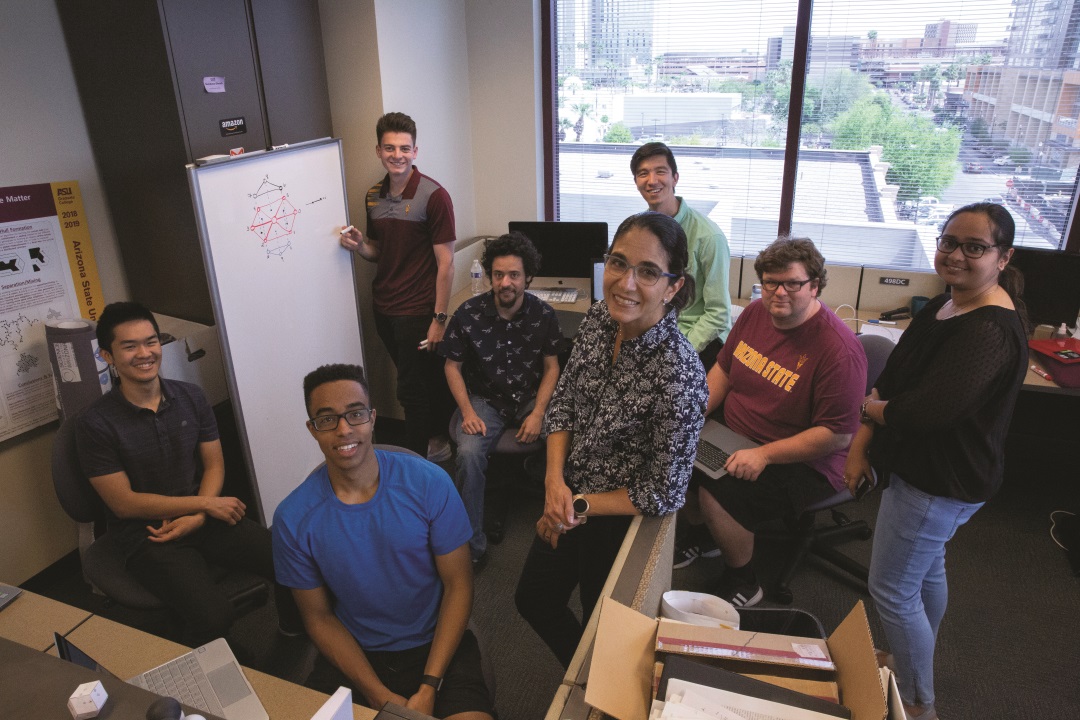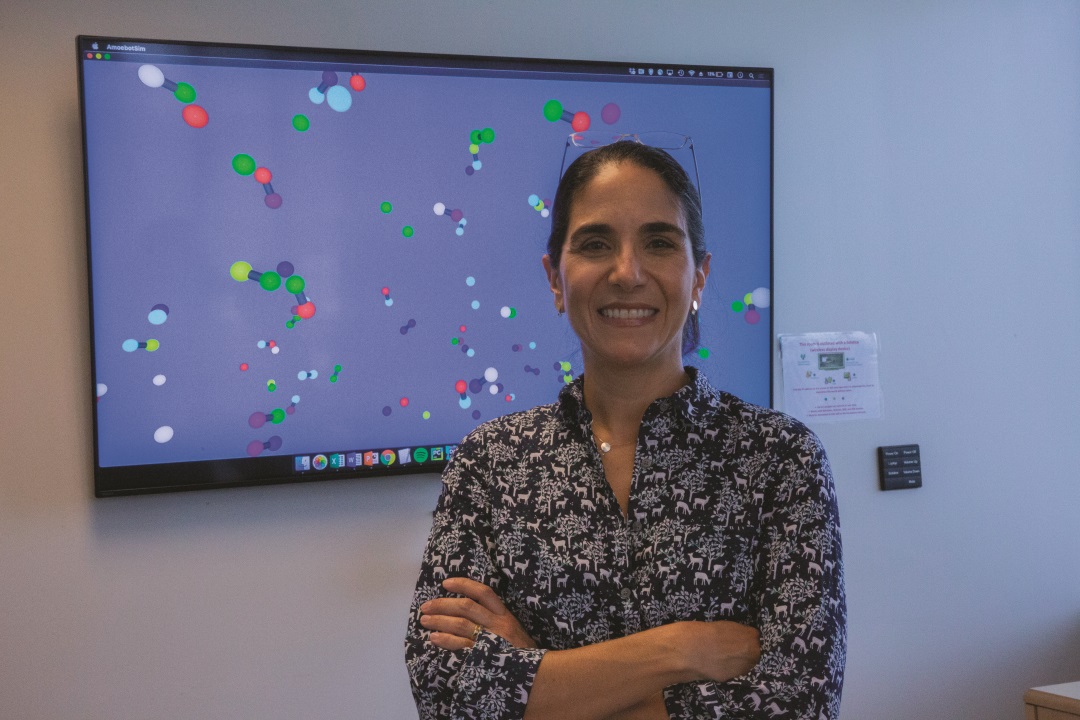The superpowers of swarms
Imagine this …
The Forth Road Bridge is a 2.5km-long suspension bridge spanning the Firth of Forth in Scotland. It’s a distinctive local landmark. More than 200,000 square metres of red paint protect its steel from corrosion. Every square centimetre of paint, as well as electrical cables and tens of thousands of bolts, are checked as part of a maintenance programme that never ends. The inspection team braves heights and bad weather to keep the bridge open.
Imagine if the inspection crew were a swarm of miniature robots with orders to repair any damage, and the paint was made of programmable matter that automatically re-covered any gaps.
What happens when army ants come across a big gap in front of them? They could take the long way around, following the edge of the crack until they can get around it. But they don’t – they make their own short cut. The ants that encounter the gap build a bridge out of their own bodies. Those following behind then walk over the bridge to reach the other side.
How do these ants know what to do? You might think that the queen ant sends out instructions but that’s not what happens. No leader directs the bridge-building task. Instead, each ant acts on its own, following simple rules. The combined effect of every ant following the same set of simple instructions produces a remarkable outcome. Together, they build a bridge.
Other types of ant display equally remarkable behaviour. Fire ants escape flooding by collecting themselves into a waterproof raft that can float on water. Again, each ant follows simple instructions to produce a flat, floating structure. This behaviour is called “swarming”.
In mathematics, a set of instructions is known as an algorithm. Investigating the algorithms that produce the kind of complex behaviour seen in ants, bees and fish is the focus of work by Dr Andréa Richa and her colleagues. She’s based at Arizona State University’s School of Computing, Informatics and Decision Systems Engineering.
In computer science, self-organising particle systems (SOPS) can be described as humanmade swarms. SOPS are studied through computer simulations and formal proofs, but the ultimate goal is to produce a real swarm made of robots. And with the right algorithms, we could get these robots to perform all sorts of useful tasks.
WHAT ARE SELF-ORGANISING PARTICLE SYSTEMS (SOPS)?
Self-organising particle systems (SOPS) consist of a multitude of tiny particles that work together to produce a particular behaviour on a larger scale. The particles are very simple, small robots that are all given the same basic instructions, or algorithm. Even though there’s no leader telling the system what to do, these basic instructions result in complex behaviour – like a group of ants building a bridge.
WHAT WOULD SOPS BE LIKE IN THE REAL WORLD?
Imagine if you could produce a material made up of thousands of separate pieces – all identical. All the individual pieces would move around together, so it would seem to be a single lump of material. This is the idea behind programmable matter. Let’s say something fell on the material and a crack appeared. Instead of staying damaged, pieces of the material would move together to close the crack. The material could also be used as paint. But instead of using a brush, you might throw the material at a wall and it would spread itself to cover the surface. Other materials might change shape in response to a particular sound. These are just a few of the possibilities and the study of SOPS is a first step towards making programmable matter a reality.
WHAT COULD PROGRAMMABLE MATTER BE USED FOR?
There are plenty of jobs in the world that are extremely dangerous, like defusing bombs or fixing leaks in a nuclear power station. Other jobs might be less dangerous but cost a lot of money. Large structures like aircraft, ships, buildings and bridges must be properly maintained to keep them safe. Such maintenance needs large teams of people and takes a long time. The maintenance team has to be on site and equipped with specialist tools and devices for taking measurements and performing tests.
In the future, jobs like these could be done by a smart material instead of people. The smart material would comprise tiny sensors, each capable of moving around. On a bridge, sensors could detect and measure the temperature, traffic load, and structural cracks and stresses. If they were also equipped with a container and a nozzle, they could squirt glue-like material into fractures to repair them.
Smart materials may also go where human beings cannot. For example, a crack on the outside of the International Space Station could be catastrophic to the astronauts inside. Instead of an astronaut putting their life at risk by going outside on a spacewalk, a collection of tiny sensors could set off on a repair mission. You can imagine a blob of material crawling around the outside of the space station until it found the crack and fixed it.
Reference
https://doi.org/10.33424/FUTURUM16
How do these ants know what to do? You might think that the queen ant sends out instructions but that’s not what happens. No leader directs the bridge-building task. Instead, each ant acts on its own, following simple rules. The combined effect of every ant following the same set of simple instructions produces a remarkable outcome. Together, they build a bridge.
Other types of ant display equally remarkable behaviour. Fire ants escape flooding by collecting themselves into a waterproof raft that can float on water. Again, each ant follows simple instructions to produce a flat, floating structure. This behaviour is called “swarming”.
In mathematics, a set of instructions is known as an algorithm. Investigating the algorithms that produce the kind of complex behaviour seen in ants, bees and fish is the focus of work by Dr Andréa Richa and her colleagues. She’s based at Arizona State University’s School of Computing, Informatics and Decision Systems Engineering.
In computer science, self-organising particle systems (SOPS) can be described as humanmade swarms. SOPS are studied through computer simulations and formal proofs, but the ultimate goal is to produce a real swarm made of robots. And with the right algorithms, we could get these robots to perform all sorts of useful tasks.
WHAT ARE SELF-ORGANISING PARTICLE SYSTEMS (SOPS)?
Self-organising particle systems (SOPS) consist of a multitude of tiny particles that work together to produce a particular behaviour on a larger scale. The particles are very simple, small robots that are all given the same basic instructions, or algorithm. Even though there’s no leader telling the system what to do, these basic instructions result in complex behaviour – like a group of ants building a bridge.
WHAT WOULD SOPS BE LIKE IN THE REAL WORLD?
Imagine if you could produce a material made up of thousands of separate pieces – all identical. All the individual pieces would move around together, so it would seem to be a single lump of material. This is the idea behind programmable matter. Let’s say something fell on the material and a crack appeared. Instead of staying damaged, pieces of the material would move together to close the crack. The material could also be used as paint. But instead of using a brush, you might throw the material at a wall and it would spread itself to cover the surface. Other materials might change shape in response to a particular sound. These are just a few of the possibilities and the study of SOPS is a first step towards making programmable matter a reality.
WHAT COULD PROGRAMMABLE MATTER BE USED FOR?
There are plenty of jobs in the world that are extremely dangerous, like defusing bombs or fixing leaks in a nuclear power station. Other jobs might be less dangerous but cost a lot of money. Large structures like aircraft, ships, buildings and bridges must be properly maintained to keep them safe. Such maintenance needs large teams of people and takes a long time. The maintenance team has to be on site and equipped with specialist tools and devices for taking measurements and performing tests.
In the future, jobs like these could be done by a smart material instead of people. The smart material would comprise tiny sensors, each capable of moving around. On a bridge, sensors could detect and measure the temperature, traffic load, and structural cracks and stresses. If they were also equipped with a container and a nozzle, they could squirt glue-like material into fractures to repair them.
Smart materials may also go where human beings cannot. For example, a crack on the outside of the International Space Station could be catastrophic to the astronauts inside. Instead of an astronaut putting their life at risk by going outside on a spacewalk, a collection of tiny sensors could set off on a repair mission. You can imagine a blob of material crawling around the outside of the space station until it found the crack and fixed it.
One day in the future, you might look up and see a swarm of robots repairing a building or a bridge. But it may be possible to create sensors as small as molecules – small enough that they could travel around inside your body. If you’re not feeling well, a doctor could give you millions of these sensors to swallow. It might look like an ordinary pill. But inside your body, they would split up and find their way around the blood system until one of them identifies something that doesn’t look right. Without any further instructions, the first sensor to find a foreign body could tell the others to come and join it. Perhaps they would then surround the invader or send a signal showing the doctor where to find it. If this idea is ever put into practice, it could be a very effective way of stopping internal bleeding or detecting cancer.
WHAT ARE THE ADVANTAGES OF SELF-ORGANISING SYSTEMS?
Self-organising systems have two advantages over a single robot. One advantage is that they’re less prone to failure. With many tiny computation devices, it doesn’t matter if a single device goes wrong. The system will continue operating as before. Think of an ant colony: An individual ant can be replaced by another because they’re all the same. The other advantage is that it can easily be scaled up if you need a bigger system – for example, to find cracks on a larger bridge. Each individual robot or sensor is very simple, so it’s cheap and easy to add more.
WHEN WILL WE SEE SELFORGANISING SYSTEMS BEING USED IN THE REAL WORLD?
For SOPS to become a reality, several major problems need to be tackled. One is developing physical robots. Each individual particle needs to be designed and engineered so that they can be produced cheaply, quickly and efficiently – thousands at a time. Once we have physical robots, they need to be programmed so that each follows the same simple rules. That’s where Andréa and other scientists are involved, developing the algorithms that the particles will each follow to produce the desired collective behaviour.
 DR ANDRÉA W RICHA
DR ANDRÉA W RICHAProfessor, School of Computing, Informatics and Decision Systems Engineering
Arizona State University
FIELD OF RESEARCH: Computer Science and Engineering
RESEARCH PROJECT: Andréa’s research focuses on algorithms and how they might control self-organising particle systems (SOPS). These algorithms program the SOPS to mimic swarming behaviours seen in nature. https://sops.engineering.asu.edu
FUNDER: National Science Foundation
 DR ANDRÉA W RICHA
DR ANDRÉA W RICHAProfessor, School of Computing, Informatics and Decision Systems Engineering
Arizona State University
FIELD OF RESEARCH: Computer Science and Engineering
RESEARCH PROJECT: Andréa’s research focuses on algorithms and how they might control self-organising particle systems (SOPS). These algorithms program the SOPS to mimic swarming behaviours seen in nature. https://sops.engineering.asu.edu
FUNDER: National Science Foundation
Every time you use a laptop, phone, set-top box or smart speaker, you’re using some kind of computer. The physical parts of a device, including its circuitry and microprocessors, are designed by computer engineers. Whereas the computer code that operates it, the software, is created by computer scientists. The pace of change in computing is rapid, with microprocessors getting smaller, robots more commonplace and software more intelligent. This will usher in a new wave of smart technology to improve the running of hospitals, offices, factories, shops, concert halls and cars.
The people who’ll shape this future – computer scientists and engineers – have analytical minds. They use creativity and problem-solving skills to get systems up and running. Most will have studied maths and a science subject – often physics – before taking a computer science degree at university.
- According to the Google’s Computer Science Summer Institute helps aspiring computer scientists learn programming fundamentals and develop their own apps. It’s a three-week programme open to students who have already enrolled on computer science courses in the US and Canada.
- Microsoft University Internships are open to students around the world who have enrolled full-time as students majoring in a suitable field. Opportunities range from software and hardware engineering to UX (user experience) design and data science.
- The average salary of a computer scientist in the US is just over $100,000 per year, according to Indeed.com. But the range of jobs varies enormously, and experienced professionals can earn twice as much. The average starting salary is about $65,000.
WHAT DID YOU WANT TO BE WHEN YOU WERE GROWING UP?
I didn’t know exactly, but I knew it had to be something related to maths. It was my favourite subject in school. My mum was a maths professor so I’m guessing she passed on some maths-loving genes to me! I love logical thinking.
WHO OR WHAT INSPIRED YOU TO TAKE UP A CAREER IN COMPUTER SCIENCE?
I didn’t want to just study maths when I went to university. Computer science was a new field at the time, at least in Brazil where I grew up, and it felt exciting. I found that I liked some classes but not all. Pure programming was just not for me, and I was thinking about switching to pure maths until I learned about algorithms.
WHAT DID YOU DO AFTER UNIVERSITY?
I knew I wanted to carry on studying algorithms, so I carried on with my master’s degree in Brazil. Algorithms ultimately lead to computer programs but they’re more abstract. I was interested in the logic behind them, and why some problems are easier to solve than others. After my master’s, I wanted to experience living abroad so I pursued a PhD at a university in Pennsylvania, USA.
WHAT DO YOU LIKE ABOUT WORKING IN A UNIVERSITY?
The nice thing is that you can always change direction. Even if you’re working on something that becomes boring, you can always move to a different area of study. There are always new things coming up so it’s very dynamic. For me, I like the idea of picking up new research areas that I can work on. And I love working with students.
WHAT ELSE DO ENJOY BESIDES MATHS?
I sing in a university choir and I like cycling, skiing, hiking, and travelling. I’m a pretty sociable person. I love going out with my friends and family, and going to movies with my kids at the weekends.
- Work according to your goals and your capabilities.
- Sometimes you’ll find a particular subject difficult but that doesn’t mean you can’t succeed, even if it takes you more effort than someone else.
- In many places, computer science is a male-dominated profession, which may put some potential students off. Universities and workplaces now have structures in place to give you extra support if you feel like you’re in the minority.
- Women can succeed and be happy in a male-dominated area – in fact, until recently I had more female PhD students than male!







